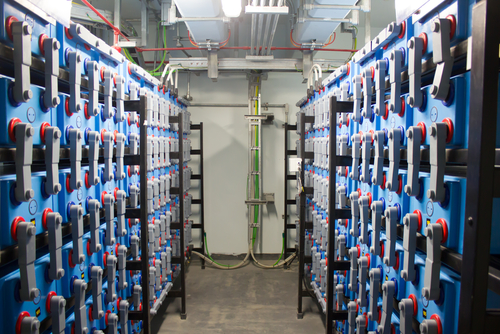EIA report reveals sharp increase in battery storage systems

A new report from the Energy Information Administration (EIA) details a sharp increase in utility-scale battery storage systems in the United States.
In 2010, there were seven operational battery storage systems in the country, which accounted for 59 megawatts (MW) of power capacity and 21 megawatt hours (MWh) of energy capacity, or the total amount of energy that can be stored or discharged by a battery. By the end of 2018, there were 125 operational battery storage systems in the United States, providing a total of 869 MW of installed power capacity and 1,236 MWh of energy capacity.
Battery storage systems store electricity and redistribute it later as needed. Historically, most utility-scale battery storage capacity is installed in regions covered by independent system operators (ISOs) or regional transmission organizations (RTOs). PJM Interconnection (PJM), which manages the power grid in 13 eastern and Midwestern states as well as the District of Columbia, and the California Independent System Operator (CAISO), accounted for 55 percent of the total battery storage power capacity built between 2010 and 2018. However, in 2018, more than 58 percent (130 MW) of new storage power capacity additions were installed in states outside of those areas.
In 2018, Alaska and Hawaii, the Electric Reliability Council of Texas (ERCOT), and the Midcontinent Independent System Operator (MISO) all added greater amounts of battery storage capacity to their power grids. Alaska and Hawaii, which have isolated power grids, are expanding battery storage capacity to increase grid reliability and reduce dependence on fossil fuels.
Also, the average costs per unit of energy capacity decreased 61 percent to $834 per kWh between 2015 and 2017. The large decrease in cost makes battery storage more economical, which helps accelerate capacity growth.
